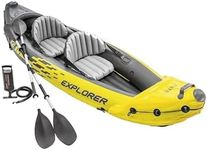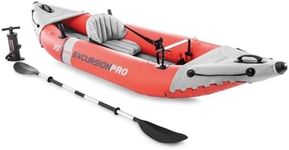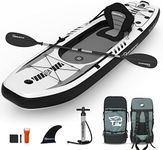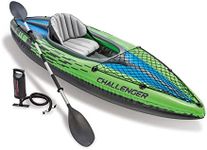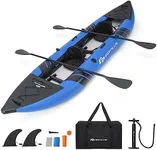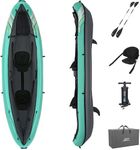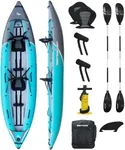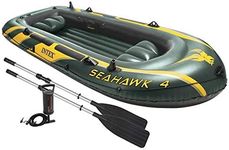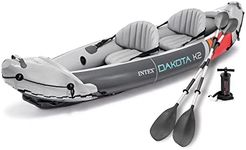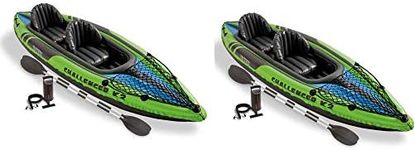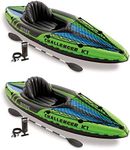Buying Guide for the Best Intex Inflatable Kayaks
Choosing the right inflatable kayak can make your time on the water much more enjoyable and safe. When shopping for an inflatable kayak, it's important to think about where and how you plan to use it, who will be paddling with you, and how much space you have for storage and transport. Understanding the key features will help you find a kayak that matches your needs, whether you're planning a relaxing day on a calm lake or a more adventurous trip down a river.Capacity (Number of People)Capacity refers to how many people the kayak is designed to hold. This is important because it affects both safety and comfort. Inflatable kayaks typically come in single, tandem (two-person), or even three-person options. If you usually paddle alone, a single-person kayak is lighter and easier to handle. If you want to paddle with a friend or family member, a tandem or three-person kayak is better. Always consider who will be joining you most often, and remember that a larger kayak can be harder to maneuver solo.
Weight LimitThe weight limit tells you the maximum combined weight the kayak can safely carry, including people and gear. This is crucial for safety and performance, as exceeding the limit can make the kayak unstable or cause it to sit too low in the water. Weight limits are usually divided into ranges: under 200 kg for solo use, 200-300 kg for two people, and above 300 kg for more people or extra gear. To pick the right one, add up the weight of all paddlers and any equipment you plan to bring, and choose a kayak with a limit comfortably above that total.
Length and WidthThe length and width of a kayak affect how it moves and feels on the water. Longer kayaks (over 3 meters) tend to track straighter and move faster, making them better for longer trips or open water. Shorter kayaks (under 3 meters) are easier to turn and handle, which is great for beginners or for use on rivers. Wider kayaks offer more stability, which is helpful for new paddlers or those who want to fish or relax. Think about where you'll use the kayak most: for speed and distance, go longer and narrower; for stability and easy handling, go shorter and wider.
Material and ConstructionThe material and construction of an inflatable kayak determine its durability, weight, and how easy it is to inflate and deflate. Most are made from PVC, vinyl, or reinforced materials. Thicker, multi-layered materials are more resistant to punctures and abrasions, making them better for rougher conditions or rocky shores. Lighter materials are easier to carry and pack but may be less durable. If you plan to use your kayak in calm, gentle waters, a lighter model may be fine. For more challenging environments, look for tougher construction.
Setup and PortabilitySetup and portability refer to how easy it is to inflate, deflate, and transport the kayak. Some kayaks come with high-output pumps and quick-inflate valves, making setup faster. The packed size and weight are also important if you need to carry the kayak to the water or store it in a small space. If you want a kayak for spontaneous trips or have limited storage, look for one that is lightweight and packs down small, with a simple inflation process.
Included AccessoriesMany inflatable kayaks come with accessories like paddles, pumps, repair kits, and carry bags. These extras can add value and convenience, especially if you're new to kayaking. However, the quality of included accessories can vary. If you already have some gear, you might not need a full set. Consider what you need to get started and whether the included accessories meet your expectations for quality and usefulness.
